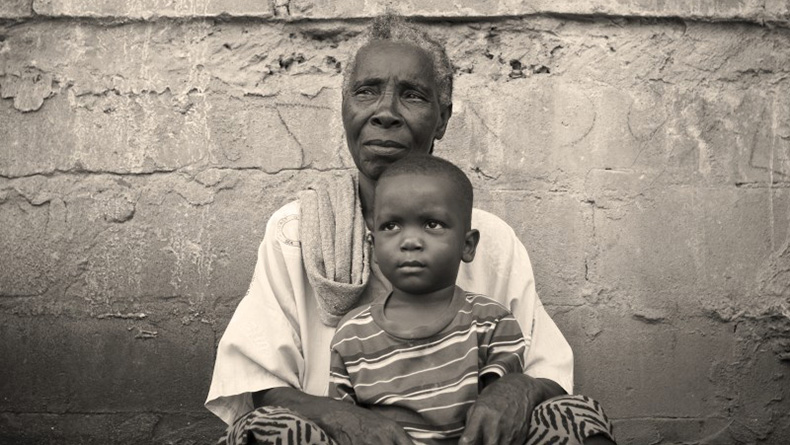AARP Hearing Center
International Day of Older Persons in an Era of Pandemics, Greater Equity & New World Order
By Jean Accius, September 28, 2020 10:21 AM

The aging of the population, in fact, is a global trend. This trend stops neither at the borders of the United States nor at those of the country of my birth, Haiti. It spans the world, from Asia, Africa, and Europe to the Americas.
October 1 is known around the world as the International Day of Older Persons (IDOP). This year marks the 30th anniversary of this commemoration and the 75th Anniversary of the United Nations (UN). For over 30 years, AARP has been informing and influencing intergovernmental issues to ensure that older adults around the world can age with dignity, purpose, and independence. Our commitment to the UN goes back to 1985 when we joined the UN NGO Committee on Ageing and opened an office in New York dedicated to the UN and focused on global aging issues. In 1987, AARP obtained Consultative Status with the Economic and Social Council, permitting it to participate more actively in intergovernmental deliberations.
This year’s IDOP theme, “Pandemics: How Do They Change How We Address Age and Ageing” offers us an opportunity to celebrate aging while also focusing on the challenges we all face during this unprecedented time.
With life expectancies on the rise and fertility rates declining in most of the world, the growth of the older population is steadily outpacing that of younger generations. In just 30 years, the number of people around the world over age 65 is expected to almost double, reaching 1.6 billion – or 17 percent of the world’s population. Demographers predict that in countries where people are aging well, more than half of children born today will live to 100. In fact, some researchers believe that the first person who will live to 150 is alive today. Longer lives are a triumph of medicine, public health, technology, and international development.
Global aging is the greatest opportunity of our lifetime and a key driver of economic growth, innovation, and new value creation. According to AARP’s Longevity Economy® Outlook, in the U.S. alone, people 50 and older contribute $8.3 trillion to the economy. This is projected to triple to $28.2 trillion by 2050. If people 50 and older in the U.S. were a country, it would be the third largest economy in the world behind the U.S. and China.
As we celebrate longevity and aging, we also must pause and reflect given the challenges we face with COVID-19, the economic crisis, and racial and social unrest that has transpired across the globe. Our world has been turned upside down. Now more than ever, we need global collaboration and information sharing among nations, regions, communities, and organizations. We are at an inflection point. On one hand, we can preserve the status quo with a patchwork approach whereby inequities continue to fester and harm the most vulnerable among us. Alternatively, we can reimagine our current systems and rebuild in ways that expand opportunities for all to achieve longer, healthier lives.
COVID-19 has only exacerbated what have been longstanding and structural issues. Solutions must be as expansive as the intensity and magnitude of the problem, in that they must involve all sectors—public, private, and non-profit. Effective public policy and evidence-based interventions can help reduce barriers to healthy living as can a commitment to innovation across all sectors. Most fundamentally, however, it will require the adoption of a new, more dynamic narrative around global population aging. We need to reject the status quo and envision a more evolved future that is prosperous, sustainable, and rooted in the principles of global collaboration and equity.
We need to tackle and address longstanding issues that are inhibiting the ability to reach our fullest potential:
Ageism is not only a social issue, it’s also structural. People, especially people of color, are easily marginalized, devalued, and discriminated against because of their age. A new AARP report found that age discrimination against workers age 50 and older cost the economy $850 billion in 2018. According to this report, the potential economic contribution of the older population could increase by $3.9 trillion annually in a no-age-bias economy, which would mean a contribution of $32.1 trillion to GDP by 2050. These findings are consistent with the Organisation for Economic Co-operation and Development (OECD) which calculates that eliminating factors such as discrimination and ageism would raise the GDP per capita in OECD countries by 19 percent over the next 30 years. This is an intergenerational issue that not only affects older people, but also millennials, GenZ, and future generations who will face the future fallout of inequality.
COVID-19 and the devastating impact on older adults, especially those residing in long-term care facilities. The world got sucker-punched by COVID-19, and we learned the U.S. needs to improve on several dimensions, particularly addressing the needs of older people. Whether its age discrimination in medical care, scaling back clinical and social services due to local shutdowns, or underlying conditions that put them at greater risk of infection, older adults around the world are the bullseye for the COVID-19 arrow. People over the age of 80 die at five times the average rate of those infected. In fact, the U.S. is not alone. According to the World Health Organization, the evidence illustrates that, in many countries, more than 40 percent of COVID-related deaths have been in long-term care facilities, with figures being as high as 80 percent in some high-income countries. Countries will not be able to fully prevent, reduce, or eliminate the spread of this virus without fully addressing the state of their long-term care systems.
Growing inequality and the need to close the disparities opportunity gap. This year marks five years since the adoption of the 2030 Agenda for Sustainable Development and the opportunity to act on where we are falling short. One area that warrants attention is the need to reduce inequality within and among countries. We are all weathering three major crises: the COVID-19 pandemic; a global economic shock that has left the world much poorer with trillions of loss productivity and income; and racial injustices that have sparked protest in many countries around the world. However, we are all not in the same boat.
Based on data reported by 40 states, in the United States one in every 1,850 Black Americans has died from COVID-19 — a mortality rate 2.4 times higher than that for whites.
There are many reasons for the higher COVID infection rates in the Black community:
- Black workers are overrepresented in service industry jobs, putting them in close contact with others;
- Hospitals in predominantly Black neighborhoods are more likely to close during an economic downturn or crisis situation than hospitals in white neighborhoods; and
- Conscious and unconscious bias among health care workers influences the care Black men and women receive.
COVID-19 has shone a blinding spotlight on health disparities in the Black community. When coronavirus has passed and we’ve all moved on, those disparities will be far worse. The COVID-19 pandemic has put a spotlight on the equality and economic crisis that disproportionately impacts Black men and women, and older generations.
Any desire to get back to a level of “normal” must be accompanied with the recognition that normal excluded many, and disparities and inequality were common practice. It is time to reimagine and build a future that is more equitable, and where race and other sociodemographic factors do not determine health and economic outcomes or the opportunity to live longer, healthier and more productive lives.
































































